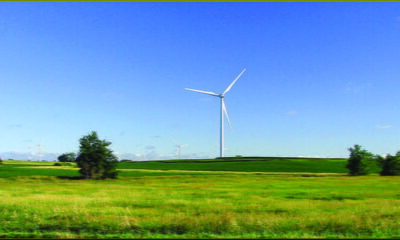

Editors Choice
How is the Energy Sector Embracing the Cloud?
Cloud technology has been an immense boon to many sectors in this new internet age, from marketing to biotechnology and real estate. What many are not aware of, however, is the level of change which the energy sector has seen in regards to cloud adoption and utilization. What benefits has the cloud had to the modern age of the energy sector, and how has it developed into a more efficient and effective method of business? We’ll take a look in this article.
1. Cohesive Monitoring Systems
One of the biggest challenges faced by the traditional energy sector is the monitoring of wide-scale systems. The old system requires immense manpower, both in terms of time and effort, and involves the risk of human error. Modern systems are becoming less reliant on these methods, instead, preferring to rely on automatic systems which are measured electronically, and then automatically uploaded to a central cloud service. Cheaper, faster, and more reliable, this development has done more than just decrease operating costs within the energy sector; it has improved its overall efficiency.
An added bonus of this is a type of standardization across different companies. While the traditional setup might rely on very different methods of recording, the modern use cloud technology can be based on a solid shared framework, which proves fantastically useful when it comes to establishing clear lines of communication.
2. Asset Management
Building on the advantages of more cohesive monitoring systems are the cloud capabilities of asset management and computations. Far from the old methods of centralized file cabinets, cloud data storage is, by its very nature, digital. This means that drawing hard data from any desired source is much easier than it has ever been in the past, with visualizations and analysis of this data seeing commensurate improvements. With new developments in technology like the 21,000 vehicle charging stations now placed within the US, it’s important that the sector stays constantly alert to these modern innovations.
Where this especially shines is when it comes to an understanding of grid patterns, predicted draws, and potential areas of concern. Greater analytic and computing software, now reaching a similar level of overall cohesion and translatability as modern cloud-based monitoring systems, allow for faster work to be performed than ever in the past with a lower margin of error. Also, as with the developments in monitoring systems, this increase in efficiency sees gains for both the sector and the end customer, with greater reliability and lower total cost being net positives for all involved.
3. Analysis of Green Energy
While green energy has been a long time coming, it is only over the last few decades that it has reached a real level of both viability and acceptance within the American mainstream consciousness. With over 100,000 solar systems recently placed in California, this is a growing business in many likeminded progressive areas. Because of this relative infancy, elements of these technologies have not been properly mapped and analyzed. Reliance on cloud technology allows us to collate and measure potential issues and areas of advancement in a fraction of the time it used to take. Not only does this save time, it helps better establish what infrastructure we should be leaning towards in the future.
What of Security?
As with any device or system which must interface with the internet in some way, security has become an increasing concern. Online security for individuals and small businesses is incredibly important and the introduction of cloud computing into the energy sector can have far wider reaching implications than just the individual. While direct interference resulting in shutdowns is the most visible threat in this regard, other threats relating to the proper maintenance of data are also a major source of potential problems.
Any manipulated data can end up with downstream effects when it comes to the price and distribution of electricity down the line and so there are various methods which have been applied to prevent these results from ever taking shape. Commonly, this includes base level security such as Web Application Firewalls (WAF), which work to analyze and prevent many common attacks such as spear phishing. This is especially important given the ever-evolving nature of online security threats, with issues like malware concerns potentially already lying dormant in many currently active systems.
Cloud Technology for an Integrated Future
The energy sector, like so many others, is looking towards a future more integrated into the cloud than ever before. As this progress inevitably pushes forward, so too will the supporting technology and designs which allow us safe and efficient management of all involved systems. As we have not yet seen the natural endpoint of this technology, and with adoption being slower than is strictly necessary, it is likely that there will be future developments which further revolutionize the industry as cloud computing and storage already has. As for exactly what form this will take, we don’t yet know, but all indications are that this means a better and cheaper environment for both the sector itself and those reliant customers.


 Environment10 months ago
Environment10 months agoAre Polymer Banknotes: an Eco-Friendly Trend or a Groundswell?

 Environment11 months ago
Environment11 months agoEco-Friendly Home Improvements: Top 7 Upgrades for 2025

 Features9 months ago
Features9 months agoEco-Friendly Cryptocurrencies: Sustainable Investment Choices

 Features10 months ago
Features10 months agoEco-Friendly Crypto Traders Must Find the Right Exchange



























